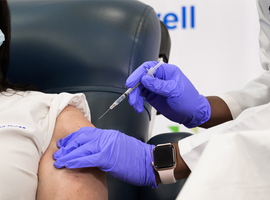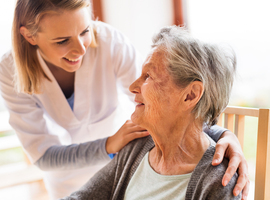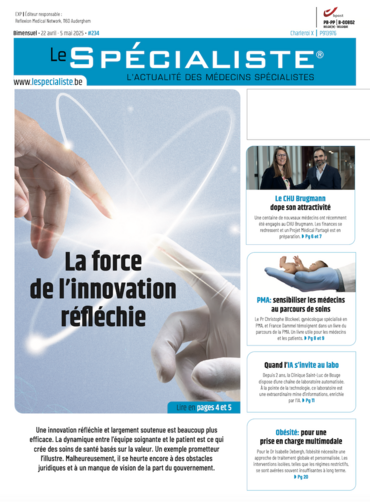1. Nguyen OK, Makam AN, Clark C, et al. Predicting all-cause readmission using electronic health record data from the entire hospitalization: model development and comparison. J Hosp Med 2016;11(7):473-80.
2. Guérin J, Laizet Y, Le Texier V, et al. OSIRIS: a minimum data set for data sharing and interoperability in oncology. JCO Clin Cancer Inform 2021;5:256-65.
3. Golbus J, Pescatore NA, Nallamothu BK, Shah N, Khetrepal S. Wearable device signals and home blood pressure data across age, sex , race, ethnicity and clinical phenotypes in the Michigan Predictive Activity & Clinical Trajectories in Health (MIPACT) study: a prospective community-based observational study. Lancet Digit Health 2021;3(11):707-15.
4. Perino AC, Gummidipundi SE, Lee J, et al. Arrhythmias other than atrial fibrillation in those with an irregular pulse detected with a smartwatch: findings from the Apple heart Study. 2021 Sep. Circ Arrhythm Electrophysiol 2021;14(10):e010063.
5. Boen CE, Barrow DA, Bensen JT, et al. Social relationships, inflammation, and cancer survival. Cancer Epidemiol Biomarkers Prev 2018; 27(5):541-9.
6. Qian S, Golubnitschaja O, Zhan X. Chronic inflammation: key player and biomarker-set to predict and prevent cancer development and progression based on individualized patient profiles. EPMA J 2019;10:365-81.
7. Chonghe W, Xiaoyu C, Liu W, et al. Bioadhesive ultrasound for long-term continuous imaging of diverse organs. Science 2022; 377(6605):517-23.
8. Doherty BT, Koelmel JP, Lin EZ, Romano ME, Godri Pollitt KJ. Use of exposomics methods incorporating sensors in environmental epidemiology. Curr Environ Health Rep 2021; 8(1):34-41.
9. Vineis P, Chadeau-Hyam M, Gmuender H, et al. The exposome in practice: design of the EXPOsOMICS project. Int J Hyg Enviro Health 2017; 220:142-51.
10. Shi L, Wu X, Yazdi MD, et al. Long-term effects of PM2-5 on neurological disorders in the American Medicare population: a longitudinal cohort study. Lancet Planetary Health 2020;4(121):557-65.
11. Swinburn BA, Kraak VI, Allender S, et al. The global syndemic of obesity, undernutrition, and climate change: The Lancet commission report. Lancet 2019;393(10173):791-846.
12. Koch CA, Sharda P, Patel J, et al. Climate change and obesity. Horm Metab Res 2021;53(9):575-87.
13. Trentinaglia MT, Parolini M, Donzelli F, Olper A. climate change and obesity: a global analysis. Global Food Security 2021;100539.
14. Magkos F, Tetens I, Gjedsted Bügel S, et al. The environmental footprint of obesity. Obesity 2020; 28(1):73-9.
15. Jia P, Dai S, Rohli KE, Rohli RV, et al. Natural environment and childhood obesity: a systematic review. Obes rev 2021;22(1):e13097.
16. Luo Y, Lin H. Inflammation initiates a vicious cycle between obesity and nonalcoholic fatty liver disease. Immunity Inflammation and Disease 2021;9:59-73.
17. Greten FR, Grivennikov SI. Inflammation and cancer: triggers, mechanisms and consequences. Immunity 2019; 51(1):27-41.
18. van Kruisdijk RCM, van der Wall E, Visseren FLJ. Obesity and cancer: the role of dysfunctional adipose tissue. Cancer Epidemiol Biomarkers Prev 2009;18(10):2569-78.
19. Geisslinger F, Vollmar AM, Bartel K. Cancer patients have a higher risk regarding COVID-19 and vice versa? Pharmaceuticals 2020;13(7):143.
20. Daly M, Robinson E. Depression and anxiety during COVID-19. Lancet 2022;339(10324):518.
21. Premraj L, Kannapadi NV, Briggs J, et al. Mid and long-term neurological and neuropsychiatric manifestations of post-covid-19 syndrome: a meta-analysis. J Neurol Sci 2022; 434:120162.
22. Wang S, Quan L, Chavarro JE, et al. Associations of depression, anxiety, worry, perceived stress, and loneliness prior to infection with risk of post-covid-19 conditions. JAMA Psychiatry 2022;79(11):1081-91.
23. Plackett B. The vicious cycle of depression and obesity. Is it time for obesity to be treated as a mental-health concern? Nature 2022;608:S42.
24. Bergmans RS, Sadler RC, Wolfson JA, Jones AD, Kruger D. Moderation of the association between individual food security and poor mental health by the local food environment among adult residents of Flint, Michigan. Health Equity 2019;3(1):264-74.
25. Greathouse KL, Wyatt M, Johnson AJ, et al. Diet-microbiome interactions in cancer treatment: opportunities and challenges for precision nutrition in cancer. Neoplasia 2022;29:100800.




















